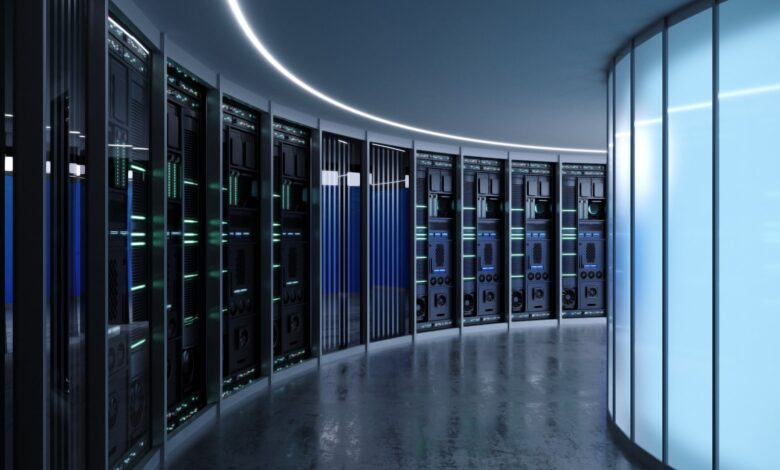
In the age of artificial intelligence, the environmental footprint of data centres has become an increasingly pressing concern especially in the race to hit net zero. These facilities are hubs for storing and processing vast amounts of information however they require a significant amount of energy to maintain a stable, controlled environment. One of the most critical aspects of running an efficient and sustainable data centre is managing the internal climate.
Maintaining optimal temperatures in data centres is crucial to both the performance and sustainability of these facilities. With heat being a byproduct of server operations, cooling systems are needed yet, they often consume large amounts of energy, contributing to high operational costs and increased carbon footprints. To address this, construction companies are implementing solutions within the initial planning stages of a new building to enhance energy efficiency and reduce environmental impact.
The Challenge of Temperature Control in Data Centres
Data centres rely on precise temperature regulation to ensure the efficient functioning of servers. These facilities house large amounts of equipment that generate significant heat. When not properly managed, this heat can reduce the lifespan of hardware, or even lead to failures such as electrical fires. Managing the temperature inside data centres is vital for ensuring the technology is functional and the sustainability of the building itself.
To maintain temperature control in these buildings, data centres typically rely on mechanical cooling systems. These systems, however, contribute to approximately 40% of the buildings’ overall energy consumption. In a time where energy efficiency and environmental responsibility are vital, it is essential to find solutions that help reduce the amount of energy consumption for facility operators.
Data Centres in Cooler Climates
The geographical location of a data centre can also play a significant role in improving its energy efficiency. Some data centres are being strategically located in cooler climates to take advantage of naturally lower temperatures. For instance, regions like Northern Virginia in the U.S. have become popular for data centre construction due to their naturally cooler environment, lower energy costs, and strong fibre networks.
By utilising external climate conditions to reduce the demand for mechanical cooling systems, companies are helping to make data centres more sustainable. However, even in cooler climates, managing internal temperatures remains a key challenge, and is therefore encouraging architects to research other solutions to achieve consistent temperature regulation.
Maintaining Consistent Internal Temperatures
Typically, the temperature in data centres needs to be maintained within a five-degree variance to avoid the risk of overheating or underperformance. While the external climate can assist in naturally lowering temperatures, internal thermal management solutions are still needed to maintain precise temperature control inside the facility.
Thermal breaks are one solution that can contribute significantly to stabilising internal temperatures. By incorporating low-conductivity materials into foundations, roofs, and other structural components, to prevent thermal bridging, the internal temperature of data centres can be isolated and controlled more effectively. This means that the external cooling systems are able to work more efficiently as the cool air is unable to escape. Henceforth, this will reduce the amount of energy consumed to run the external cooling system, making data centres more sustainable and in line with global environmental goals.
The Future of Green Data centres
As the demand for data continues to grow, the need for sustainable infrastructure becomes even more urgent. Thermal breaks, combined with strategic site selection and energy-efficient cooling systems, represent a step forward in making data centres more environmentally friendly. These innovations not only help data centres meet sustainability targets but also contribute to the wider goal of reducing global energy consumption and carbon emissions.
The continued adoption of energy-efficient technologies, such as thermal breaks, will be key in the transition toward greener data centres. As more operators recognise the benefits of these solutions, the industry as a whole will continue to evolve toward greater sustainability.
Conclusion
Thermal breaks are an integral component in the design of energy-efficient and sustainable buildings and have become a vital part to the construction of new data centres. By reducing the overuse of mechanical cooling and preventing energy loss through the building envelope, these materials help maintain optimal internal temperatures while lowering energy consumption. Combined with other strategies such as site selection in cooler climates, thermal breaks contribute to the overall sustainability of data centres. As the industry continues to grow, these innovations will play a critical role in ensuring that data centres remain both economically viable and environmentally responsible.



